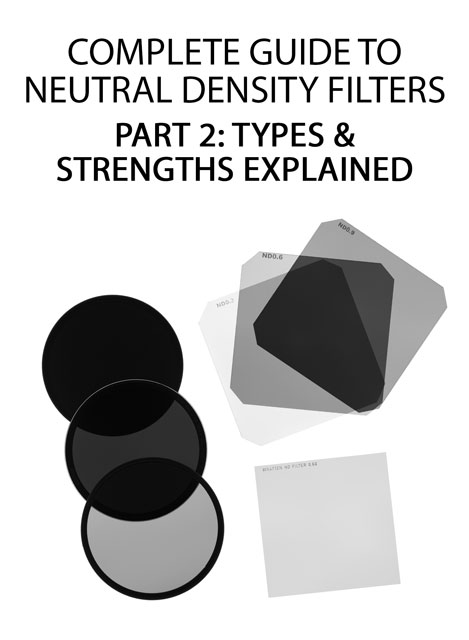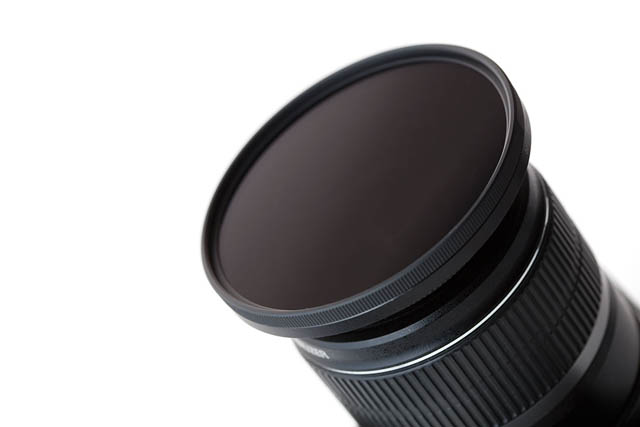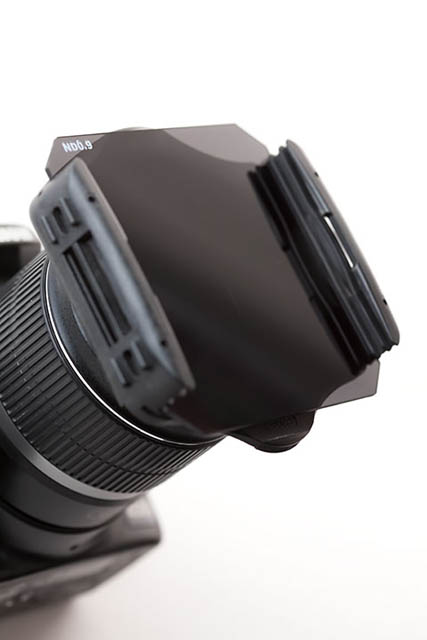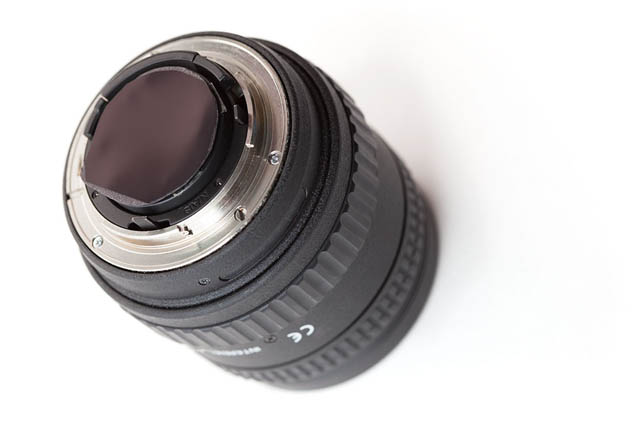Complete Guide to Neutral Density filters – Part 2: Types & Strengths explained
Neutral density filters are available in a range of different strengths, types, and mounts. Different manufacturers may rate their ND filters in different ways, which can make make it quite confusing when you're looking for a specific strength filter. In this article we'll look at what the different ratings actually mean, and types and mounts available, so you can make a more informed choice when deciding what ND filter to purchase.
ND filter density ratings explained
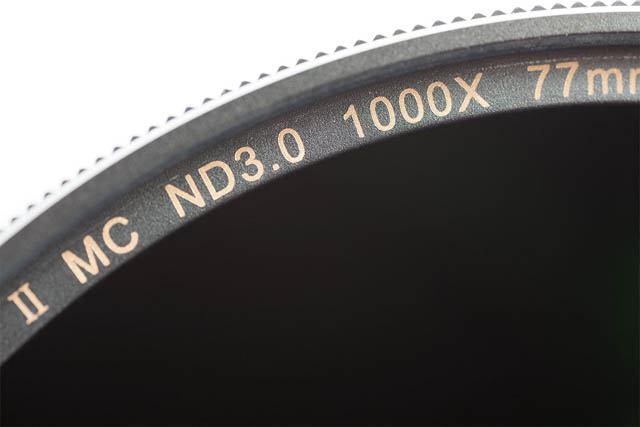
ND filter marked with optical density and filter / multiplication factor to indicate filter strength
ND filters are rated for the amount of light they cut. Different filters may be rated in different ways:
- Stops, e.g. 3 stop ND
Filters that are measured in stops are the easiest to make sense of, since we also measure the other camera exposure settings (aperture, ISO, and shutter speed) in stops. One stop means a halving of the light. A 3 stop ND would mean you can use a shutter speed 3 stops slower (or a 3 stops wider aperture ) than you could normally in the same lighting conditions.
- Optical density, e.g. ND0.9
For a filter measured by optical density, 0.3 is equivalent to 1 stop of light reduction. For example, an ND0.9 filter reduces the exposure by 3 stops.
- Multiplier / filter factor, e.g. 8x
This measures how many times the light is reduced by. So a 1 stop filter reduces light by 2x, a 2 stop by 4x, a 3 stop by 8x, a 4 stop by 16x, etc. You can convert the multiplier to optical density by calculating the log to the base 10. Or convert it to stops by using log to base 2. But that's not very practical in most situations.
Instead, simply start at 1 and count how many times you have double it until you get to the filter's rated multiplier. For a 16x filter, that would be 2, 4, 8, 16 - we doubled the number four times, so 16x must be a four stop reduction in light.
Note that the stronger filters aren't rated exactly in terms of their multiplication factor. For example, ten stop filters are usually sold as 1000x filters rather than the more exact 1024x rating.
What strength ND do you need?
Unfortunately this is not a question I can answer, since it depends on your camera, the light levels you're shooting in, and how slow a shutter speed you want. You should be able to determine for yourself what strength ND filter you need though.
Take a photo under the same conditions and camera settings that you want to use the ND filter under. Use your camera's Aperture priority exposure mode, so that you choose the aperture and ISO settings, but the camera automatically selects the shutter speed for the 'correct' exposure. So, for example, if you want an ND filter for large aperture video in bright sunlight, take your camera out into bright sunlight, select a large aperture, and take a photo.
By looking at the shutter speed the camera chose for this image and comparing it to the shutter speed you want, you can count the difference in stops and so determine how strong an ND filter you need to get your desired shutter speed in those same conditions.
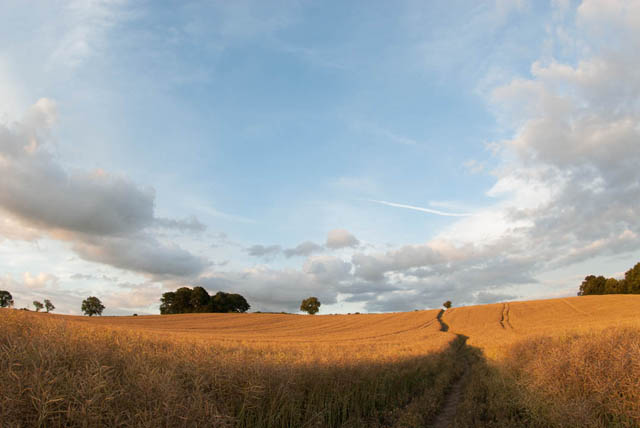
This photo was taken at f/8 ISO100 1/25s with no ND filter. If I wanted a 15s exposure time, that would mean I need a 8 2/3 stop ND filter as that is the difference in exposure between 1/25s and 15s. In practice this would mean something like a 6 stop + 2 stop ND filters stacked, 1/3 stop increase in aperture, and overexpose by 1/3 stop to make up the total 8 2/3 stops difference.
We'll go into more detail on calculating the ND strength needed (or shutter speed a specific ND strength will give) in the next article on using ND filters.
In a very general sense, a variable ND filter is likely to be the best choice for video work. While a set of 3, 6, and 10 stop ND filters gives you a lot of flexibility for stills.

Haida 8x 64x 1000x ND filter kit
Stacking ND filters
ND filters can also be stacked (placing one in front of the other). Five stop ND filters are pretty unusual, but if you need a 5 stop reduction in light you can stack a commonly available 2 and 3 stop ND filter to achieve the desired effect.
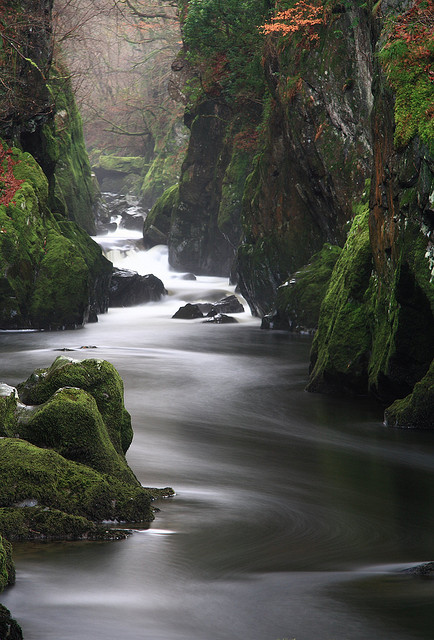
Glen Again by James Russell on Flickr (licensed CC-BY-SA)
The same as any other filter though, stacking filters may introduce vignetting, flare, and a reduction in image quality. This depends partly on your lens and also the quality of filters you're using. A wide angle lens is more likely to suffer from vignetting when stacked filters are used.
Good quality ND filters are unlikely to introduce lens flare or reduce image quality when stacked. But with low quality filters you are likely to see these problems when just using a single filter, and stacking them just makes the matter much worse.
Types of ND filter
There are three types of neutral density filter:
- Solid
A filter that cuts down light equally across the frame by the rated number of stops.

- Variable
A filter that cuts down light equally across the frame, but where the strength can be changed by turning a ring on the filter.

- Split / Graduated
A filter where only one half cuts down light, and the other half is clear. These filters will not be discussed in this article, but you can read more about them here: Graduated Neutral Density Filters.

ND filter mount types
There are three types of mounts used for neutral density filters:
- Screw-on
-
These come in a wide variety of sizes, designed to screw on to the filter threads at the front of your lens. If you have multiple lenses with different sized filter threads, it can make sense to buy filters in the size your largest lens uses. Then just use a step down ring to use the same filter on your smaller lenses. Much cheaper than buying a separate filter for each of your lenses.
Variable ND filters are only available as screw-on filters.
- Slot type
-
Slot type filters are square or rectangular pieces of glass or plastic, designed to slot into a filter holder that you attach to your lens. This allows you to just purchase adapter rings to fit the filter holder to your different lenses, while using a single filter.
If you have other slot type filters (such as a graduated ND filter) that you are likely to want to use in conjunction with a solid ND filter, then using a slot type ND filter as well makes good sense.
- Gelatin / Polyester
-
This is a filter that comes as a thin sheet of flexible plastic. They are sometimes referred to as gelatin or gel filters, as that was the material this type of filter was made from in the past. Gelatin scratches easily and can go moldy, so polyester is typically used today instead.

While a gelatin filter can be put in a filter frame and mounted in front of the lens, the normal use is to mount behind a lens that does not accept front-mounted filters. This is mainly ultra-wide lenses and fisheye lenses.
You cut a small square of of the filter, then insert it into the small gel filter holder on the rear of the lens. Not all lenses have a rear filter holder - in this case you might be able to tape the filter to the rear of the lens, but this is not really recommended.
- Built-in
-
It should additionally be noted that some (very few) cameras come with a built-in ND filter. This can usually be activated through the menu, though it may only be available when the camera reaches its maximum shutter speed.

The X100S' onboard flash destroys the sun... by rpavich on Flickr (licensed CC-BY) - captured using a camera with built-in ND filter
Variable ND filters
One thing variable neutral density filters are very useful for is video work. If you're filming in bright light, and then the next shot is in shadow, you don't need to change the ND filter between shots. You just change the strength of the filter by turning the adjustment ring.
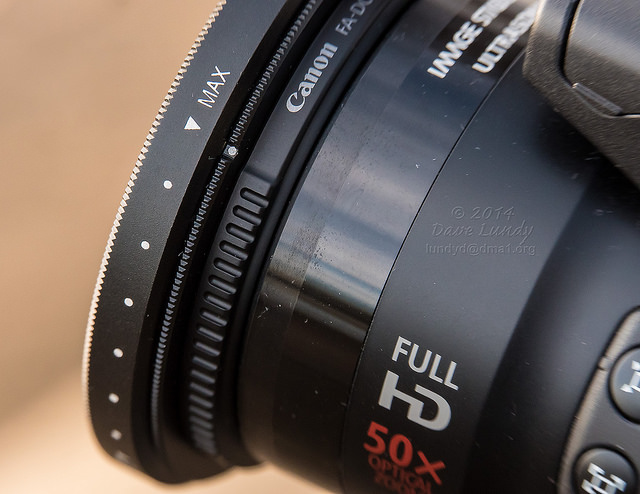
Variable ND filter on my camera by Dave Lundy on Flickr (licensed CC-BY-ND)
If you're skilled, it's even possible to take a single shot where you move between differently lit areas, and smoothly adjust the filter to keep the exposure steady.
A variable ND filter is also a lot cheaper than buying separate ND filters in various strengths. And a single filter takes up much less room in your bag than a wallet of filters.
One thing variable neutral density filters are pretty useless for, is use with a wide angle lens. On wide angle lenses you'll get a dark cross shape going across the center of the image.
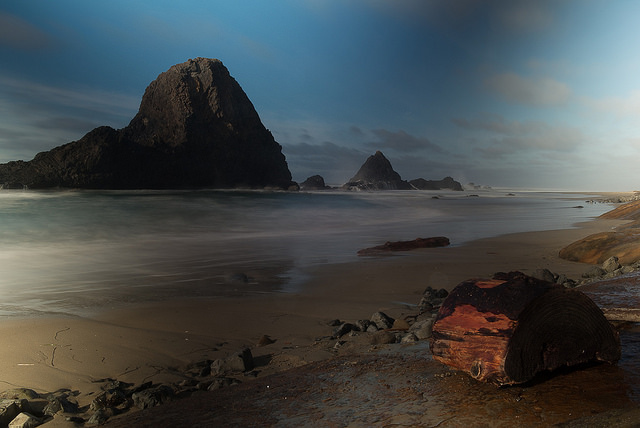
Variable ND Filters Suck by Bill Young on Flickr (licensed CC-BY)
On moderately wide angle lenses, you can dial down exposure by 2-3 stops using a variable ND filter, but at higher strengths you'll get the cross pattern. On longer focal lengths you can use the filter at any strength without any problem.
I hope this article has given you a good overview of the different types of ND filter available. In the next article we'll look at how to use an ND filter effectively, while the final article in this series will look at potential problems you may come across when using an ND filter, and how to avoid or work round these issues.
